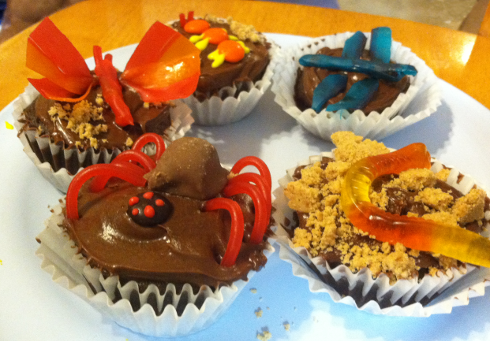The second last half of this chapter of Story of the World deals with the king Amenhotep (later Akhenaten), a Pharaoh who briefly transformed religion and art Egypt, and King Tutankhamun, who during his short reign, changed everything back. As always, I offer my suggestions for activities and other ways to enhance the reading below.
This post contains some affiliate links through which I can earn commission.
SUGGESTED BOOK: ANCIENT EGYPT REVEALED
As you know, I ALWAYS look for pictures from library books or online to illustrate the chapter (cause for my visual learner, one black and white pic isn't enough). Usually, any kids books related to the subject will have some pictures that would work to illustrate the chapter and it doesn't really matter which one you get...but for this subject this book was SO PERFECT for illustrating that I think it's worth searching for specifically (maybe even doing interlibrary loan for). It had a really good pictures of Amenhotep...a large statue of him and a wall carving of him and his wife Nefertiti, and more pictures of her on another page (search for Akhenaten, his other name, in the index to find it) But where it really shines for this chapter is the TWO special lift the flap pages related to King tut (see pictures and/or video below).
Amenhotep
One interesting thing about Amenhotep/Akhenaten that SOTW doesn't mention is how he changed art in Egypt. For thousands of years before Akhenaten, and for nearly 1000 years after his reign, Egyptian art remained largely the same. But for a brief period of about 60 years during his reign and shortly afterwards, the style of artwork in Egypt changed. This period of time was called the Armana period. The videos below all share a little something about this...
VIDEO SUGGESTIONS
TICE ART 1010 - Ancient Near Eastern and Ancient Egyptian Art (4 min)
This video is about Ancient Egyptian Art in general (and Mesopotamian art, but I've set the link to start at the Egyptian section), and is done in a cartoon style that would be fun for even young kids to watch. It only briefly covers the art of the Armana period, but I like it because it shows what Egyptian art was like before and after that period, for contrast.
Armana Period (10 min)
This video covers more about both the religious and artistic changes during this period. Sadly it's a little grainy and may not be as fun for younger kids.
Egypt's Armana Period (11 min)
The first half of this video first talks about the discovery of King Tut's Tomb (so would be a great tie-in between the first and last parts of this SOTW section), and from 4:46 on talks about Amenhotep/Akhenaten. It mostly focuses on the religious changes but gets into the art style change a bit too. It's a very engaging video.
ILLUSTRATION SUGGESTIONS
Good places to find illustrations to use in the chapter.
- Akhenatan Wikipedia Page (various good pictures)
- Akhenatan and Nefertiti Illustration
- If you have any books on Egypt, make sure to search the index for both names (Amenhotep/Akhenaten)
King Tut
ILLUSTRATION SUGGESTIONS
Nearly all children's books on Ancient Egypt will have some illustrations of King Tut. The original version of SOTW had an illustration of his mask in the chapter, and the Revised has a coloring page of it the activity book. You can also find beautiful pictures of the mask and other art and statues of King Tut with a quick search online.
But again I want to recommend DK Ancient Egypt Revealed for illustration here. The "lift the flap" pages on Tutankhamen (transparent pages that show part of the picture underneath, and as you lift the page more detail is revealed) were a really dramatic way to illustrate this part of the chapter (as I showed on the video below). This also shows some cool techniques I have for organizing the illustration pages I use from other books while reading Story of the World. The video also features the book Make It Work: Ancient Egypt that had some good illustrations of Tutankhamen's tomb.
ACTIVITY IDEAS
Pharaoh Headress Printable (wearable)
3D Egyptian Death Mask
Make Pharoah's Crock and Flail
Coloring Page (Crowning/Marriage)
Coloring Page (mask)
How to Draw King Tut
VIDEOS
PBS Special on King Tut (27 minutes)
King Tut's Tomb and Armana Period (11 minutes)
I mentioned this one earlier but am mentioning it again. The first half of this video first talks about the discovery of King Tut's Tomband from 4:46 on talks about Amenhotep/Akhenaten.
Ancient Civilizations for Kids -Ancient Egypt
From 1:30 - 5:59 has a really good dramatic retelling of the discovery of King Tut's tomb. It reminds me of the description in SOTW.
BETWEEN THE CHAPTERS
The Bronze Age Collapse is a significant event that takes place less than 100 years after King Tut reigned in Egypt. It's not addressed in SOTW but after this chapter would be a good place to add it in. Extra Credits History has a good short kid friendly video on it.



















































